The making of Splinter Cell: Chaos Theory
As the series' return sneaks up on us, we debrief Sam Fisher's finest outing with its creators.
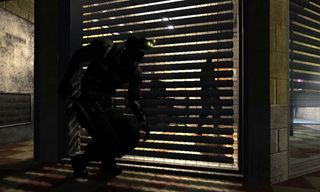
In a nocturnal world of oily shadows, where darkness cuts into damp surfaces illuminated by solitary swinging lightbulbs, the green-goggled man is king. By the time the third entry in the Splinter Cell series, Chaos Theory, was released in 2005, we were already well acquainted with Sam Fisher's skill set; with just a year between this and his previous outing, we thought we knew what to expect, and expectations were high.
But in that short time between the two games, the industry straddled a technological revolution like Sam Fisher straddles a narrow corridor with his split-jump; unthinkable things became possible through untapped tech like normal mapping and HDR lighting, playing right into—while also shaping—Ubisoft's vision for Chaos Theory. This wouldn't just be the third iteration of an already excellent series, but one of the greatest stealth games of all time.
After Pandora Tomorrow was made by Ubisoft Shanghai, development on the third game returned to where it all began—Ubisoft Montreal. The focus at this time was on making games work on the original Xbox, and the presence of former Nvidia chip designer Danny Lepage as a programmer on the game meant the team had insider knowledge on how to maximise the console's graphical horsepower (and in turn not restrict the PC version).
"Danny understood from a deep engineering perspective how the Xbox video card worked, unlocking some of the potential for shaders, normal maps, things like that," says the game's lead designer Clint Hocking. "None of us had ever seen a normal map before. John Carmack was still writing forum posts trying to describe it. Then when we started to see that stuff we were like, 'Oh my God, this looks amazing!' It totally upended our understanding of what game visuals could be."
Controlled chaos
Normal maps, which 'unflatten' textures by giving them the illusion of depth and distorted reflections from light sources, became a must for Chaos Theory. Meanwhile, the team's rendering framework—facilitated by the power of DirectX 9—was so powerful at rendering reflection effects that it set something of an elemental theme for the entire game: water. "The reflections were so unique that we felt they could become part of the game's identity, the same way that shadow casting was an identity of the original Splinter Cell," producer Mathieu Ferland tells me.
Chaos Theory foregrounds its aquatic theme right from the start—a lighthouse off the coast of Peru where a computer programmer is being held hostage. Weaving your way through a cave system glistening with moisture, you emerge into spitting weather conditions, at which point Sam's distinctive rubberised stealth suit takes on a glossy sheen (mercifully, not a factor in your visibility to enemies). During this mission, you can see enemies through the condensation-blurred glass at the top of the lighthouse, and go through damp tunnels where the walls glisten with humidity and look so coarse that you feel you could run your hands along their uneven surface and come away with moisture on your fingertips.
Set in the clammiest parts of New York, Japan, and areas around the South Pacific, Chaos Theory is a game obsessed with wetness, and takes every opportunity to show off the verisimilitude proffered by the tech of the time, and the studio's ability to implement them. Crucially, all these technical advancements were in service of the Splinter Cell stealth experience, which would also make some serious leaps in Chaos Theory.
The biggest gaming news, reviews and hardware deals
Keep up to date with the most important stories and the best deals, as picked by the PC Gamer team.
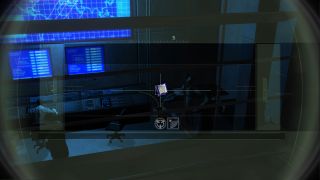
Sim pull
Clint Hocking was inspired by immersive sims, particularly Deus Ex and what he would in a later essay call its "meaningful agency across the narrative, progression and input levels of play". With the series' stealth foundations well established by 2004, Hocking saw an opportunity to start exploring some of those more ambitious design philosophies.
At the crux of this would be doing away with the previous games' automatic game over when players would trigger alarms too many times. "It was my mandate from the very first day that there is no game over in this game," says Hocking. "The game has to carry on and it has to adapt to your actions. And that was enormously difficult. It really put a lot of pressure on the team, but thinking that way also unlocked our ability to make those things work."
This led to the rise of what Mathieu Ferland calls a 'loop of emotion': the process of keeping a player constantly engaged in a loop of slowly building tension, which may (or may not) culminate in a brief explosion of action or violence when you get spotted, which then makes way for relief when we escape or evade a scenario. Then the loop restarts and the tension builds again…
We as players had to adapt too. Without a game over to bail us out, we had to think on our feet when guards stumbled upon bodies and would start walking towards the room we were hiding in. We'd flatten ourselves against walls, try to recall escape routes through windows and vents, and rely more on specialist moves like clinging to pipes, split-jumps or even sacrilegiously shooting our way out of trouble. Chaos Theory forced us to be truly present through some seriously sticky situations.
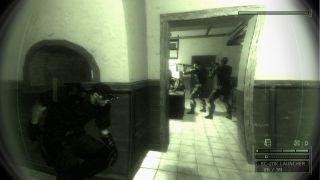
Sound design and music helped sustain this loop, and Amon Tobin's score was integral to that. The electronic music producer—renowned for his experimental and often arrhythmic music that ranges from liquidy ambient beats to industrial drum & bass—was brought onboard after Ubisoft used his music for an internal gameplay video. Tobin's soundtrack was exceptional, from the disruptive snares and drum rolls that kick in when you get caught to the cool bassy twanging and spectral radio chatter of the stealth themes.
I reached out to Tobin to talk about his contribution to the game. "The motivation was to write music that was not typical for a game at the time, in that it took its influence from both vintage film scores (like the work of Mission: Impossible theme composer Lalo Schifrin) and what I was playing at clubs, namely d'n'b," he tells me. "The idea of music intensity adapting to gameplay was also not something that had been technically achievable to the degree we wanted at that moment. It drew out technical innovation from Ubisoft along with creative challenges, such as making sure individual layers of a composition were as musically compelling as the sum of their parts."
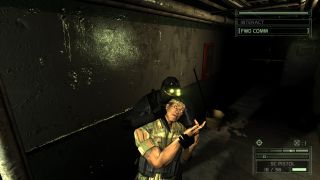
Stealth inspector
Expanding the player's freedom also required expanding the level design. Whereas previous games offered multiple stealthy solutions for getting through a given room or sequence, their relative linearity made it easy for the game to highlight the threats and challenges you'd face in each section. Individual missions were conveniently broken into segments separated by loading screens, effectively wiping clean whatever mess of snoozing bodies and broken lights you may have left in your wake.
In contrast, Chaos Theory's maps were seamless stealth sandboxes which had to account for the possibility that you could enter most spaces from any angle, bypass some areas altogether, or even 'break' the narrative flow. You could mess around with the order you did objectives, or what angle you'd approach certain scripted scenes from, and the dialogue with Headquarters would change depending on the bespoke path you carved through a mission.
A guard peered through a doorway, forcing me to instinctively hang upside-down and plip him in the face with my silencer.
But within these sandboxes were dozens of special moments, where you could slice through a Japanese Shoji wall to grab a guard from the other side, or with a meticulously placed barrel indulge in a bit of explosive Tom Cruise-style swagger. At one point I was shimmying along a pipe when, right on cue, a guard peered through a doorway, forcing me to instinctively hang upside-down and plip him in the face with my silencer. These moments were sporadic, but broke up the stealth flow in an extremely engaging way.
Many of these seemingly incidental moments were handcrafted, conceived even before the levels themselves and based on a giant internal repository of stickmen. "There was this documentation where anybody in the team could propose a contextual idea related to a situation—whether it's upside-down interrogations or pulling an enemy over a rail," Ferland recalls. "Those ideas were coming from stickman drawings. Even if there were multiple paths, we wanted to find a way to pull the player into those scenes."
When I ask Hocking about his favourite level, he immediately gives me the Panamanian Bank—an early mission that sees Fisher starting out in the grounds of a palatial building, and work his way in before freely exploring its vast interior. The initial approach is classic Splinter Cell, as you work your way up to the roof of the building and drop in through a skylight. Once you're inside, the level becomes a maze of opportunities.
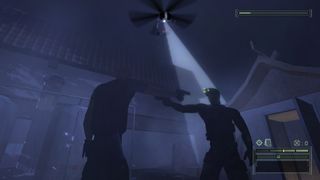
Level up
Keeping these levels seamless wasn't easy, due the lack of streaming tech built into Unreal Engine 2.5 and the high demands of normal mapping and high-fidelity texture assets. "Breaking the levels into small pieces was going to force them to be super linear, like there would literally only be three rooms and then another level and then three rooms and then another level. So we wouldn't even be able to make the game we wanted to make," Hocking tells me. "We had to write a streaming solution, and had programmers just work full-time so that whichever way a player took through a level, you'd move through chokepoints and they're dumping textures behind you and loading textures in front of you."
Chaos Theory was more than just the latest 'one-a-year' iteration in a prolific Ubisoft series, it was a peak of stealth gaming. It cast a long shadow over the series, which would later water down some of its identity by opting for a more linear, fast-paced experience (more or less parallel to when Hitman Absolution and the Thief remake seemingly forgot the defining qualities of their predecessors). But now, with Splinter Cell set to return after a decade's hiatus, it has a chance to return to—and build on—the design ethos that made Chaos Theory so special.
With so much to evolve in such a short span of time, the development process took its toll on Hocking, whose obsession to deliver his vision often saw him working 80-hour weeks of his own accord. "I'd only been making games for three years. I didn't realise how much trouble I'd put myself in," he remembers. "I sometimes question whether it was really worth it. In the end I feel like it was. I'm very proud of it and it's something I'll be proud of for the rest of my life."
There's a contemplative moment of silence before Hocking adds a caveat so common among relentlessly driven creatives. "But it wasn't free," he concludes. "It wasn't free."
Robert is a freelance writer and chronic game tinkerer who spends many hours modding games then not playing them, and hiding behind doors with a shotgun in Hunt: Showdown. Wishes to spend his dying moments on Earth scrolling through his games library on a TV-friendly frontend that unifies all PC game launchers.
Most Popular

